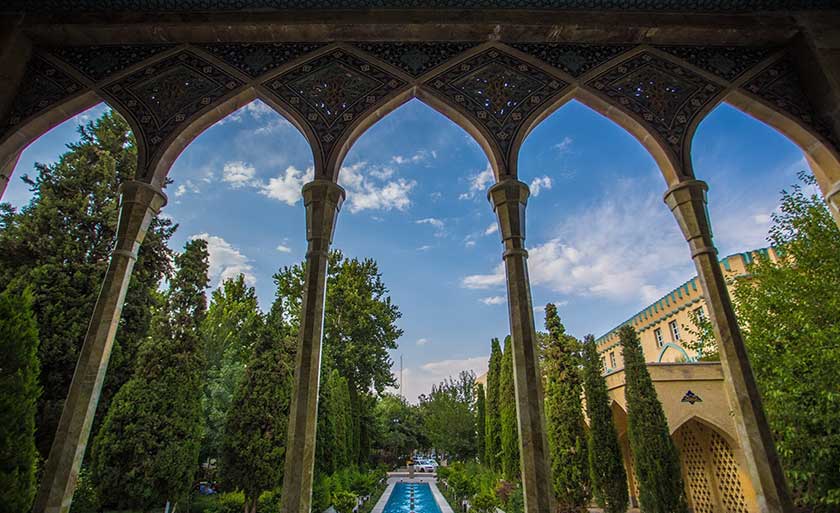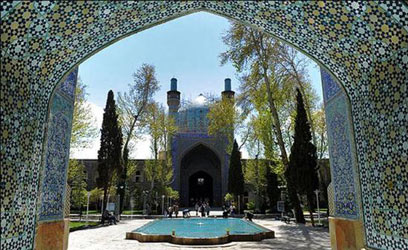Saeb Tabrizi Mausoleum

Saeb Monument
In Isfahan, there is a district named Tabriziha (Tabriz is a
city in the north-west of Iran). The reason for this is that, during
Safavid-era, Shah Abbas moved his capital from Tabriz to Isfahan then his
acquaintances immigrated to Isfahan.
Shah Abbas helped to build a district in Isfahan
so the emigrants could reside there. Saeb Tabrizi is one of the immigrants who
moved to Isfahan with Shah Abbas. He is
known as one of the greatest sonneteer of his century and the most famous poet
of Safavid-era.
The Heart of Saeb Is the Shrine of Mystics
On Saeb street, alongside a Canal named Niasarm is the tomb of Saeb. After walking through a beautiful garden, a monumental building comes into view. A cubic marble stone is laid under this monument. On its surface a beautifully carved poem can be seen. The poem translates into: the heart of Saeb is the shrine of mystics
Aesthetics of Saeb Monument Brings Out the Peace
The decorative style of Saeb Monument is a combination of marble plinth, inlaid mosaic and mirrorwork. Behind his tomb there is a selection of his poems inscribed on five different panels of tilework with arabesque designs.
The Life of Mirza Mohammad Ali Saeb
During his life, Mirza Mohammad Ali Saeb Tabrizi composed over 200,000 lines of poetry. Today, less than half of his poems have survived. The style of his poetry is called Indian. This style is composed in the rhyme scheme of Masnavi (a poetic style). His book of Masnavi is called “Ghandharnameh” which consists of poems about the battle of Shah Abbas in Ghandhar conquest. High level of understanding of the meanings of the universe is required to compose a poem with several concepts. He holds the title of ‘’Malek-ol-Shoara’’ (the outstanding poet) for his spiritual and elegant thoughts.
Overview
Opening Hours
–
Location
Saeb Tabrizi Monument, Saeb Street, Isfahan, Iran
Contact
–
Price
–


